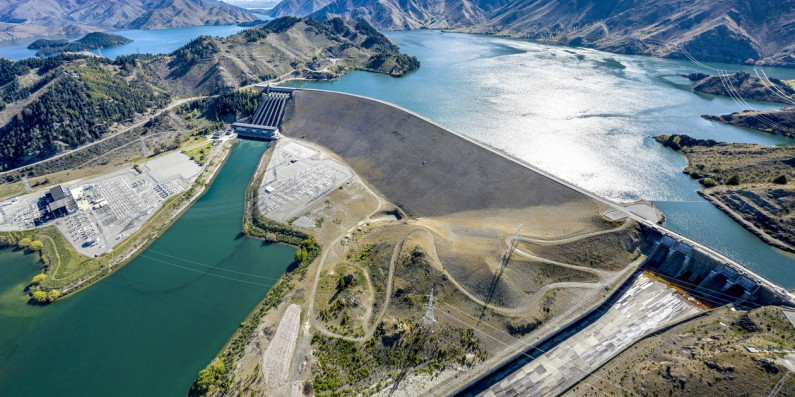
New Zealand’s annual emissions decreased in 2022
New Zealand’s Greenhouse Gas Inventory (1990-2022) shows that gross greenhouse gas emissions decreased by 4 per cent in 2022.

New Zealand’s Greenhouse Gas Inventory (1990-2022) shows that gross greenhouse gas emissions decreased by 4 per cent in 2022.
Aotearoa New Zealand’s gross greenhouse gas emissions decreased by 3.4 million tonnes of carbon dioxide equivalent (Mt CO2-e) in 2022, compared to 2021.
3.4 Mt CO2-e is roughly triple the emissions produced by all domestic flights in New Zealand in 2022.
This is the third successive slight decrease year-on-year.
New Zealand’s Greenhouse Gas Inventory is the official annual report of all human-induced emissions and removals produced within New Zealand.
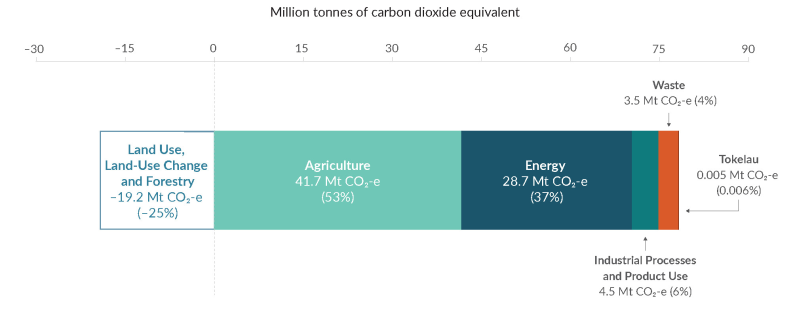
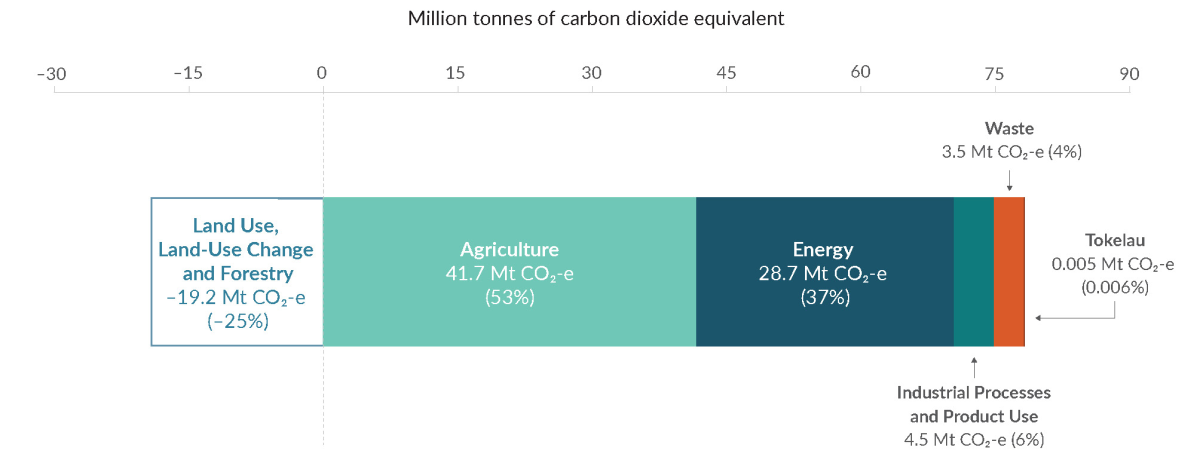
The biggest reason for the decrease in gross emissions between 2021 and 2022 was an 8 per cent (2.5 Mt CO2-e) decrease in emissions from energy.
This was largely because there was more renewable electricity – mainly hydroelectricity – on the grid. This meant we used less coal and gas, decreasing emissions by 1.7 Mt CO2-e. The proportion of hydroelectricity on the grid in any given year can fluctuate, but wet conditions were good for hydroelectricity generation in 2022.
The closure of New Zealand’s sole oil refinery led to a 0.6 Mt CO2-e decrease in emissions from petroleum refining.
Emissions from road transport decreased by 0.2 Mt CO2-e due to decreased petrol consumption, even though the estimated kilometres travelled by petrol vehicles remained largely stable.
Agricultural emissions decreased by 1.4 per cent (0.6 Mt CO2-e) compared to 2021, because less synthetic nitrogen fertiliser was used, and the number of sheep and beef cattle fell.
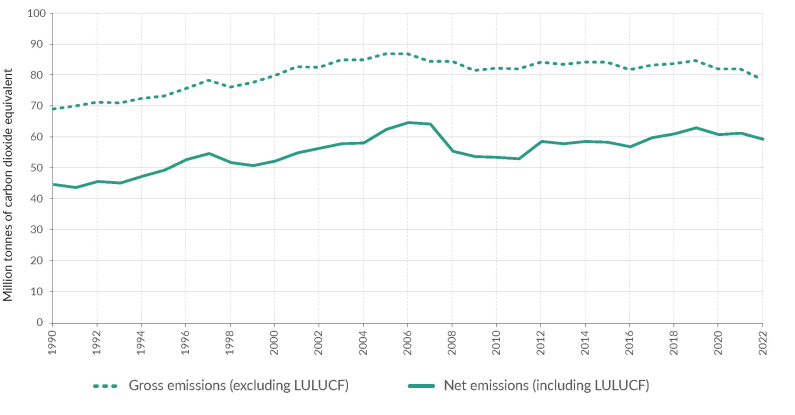
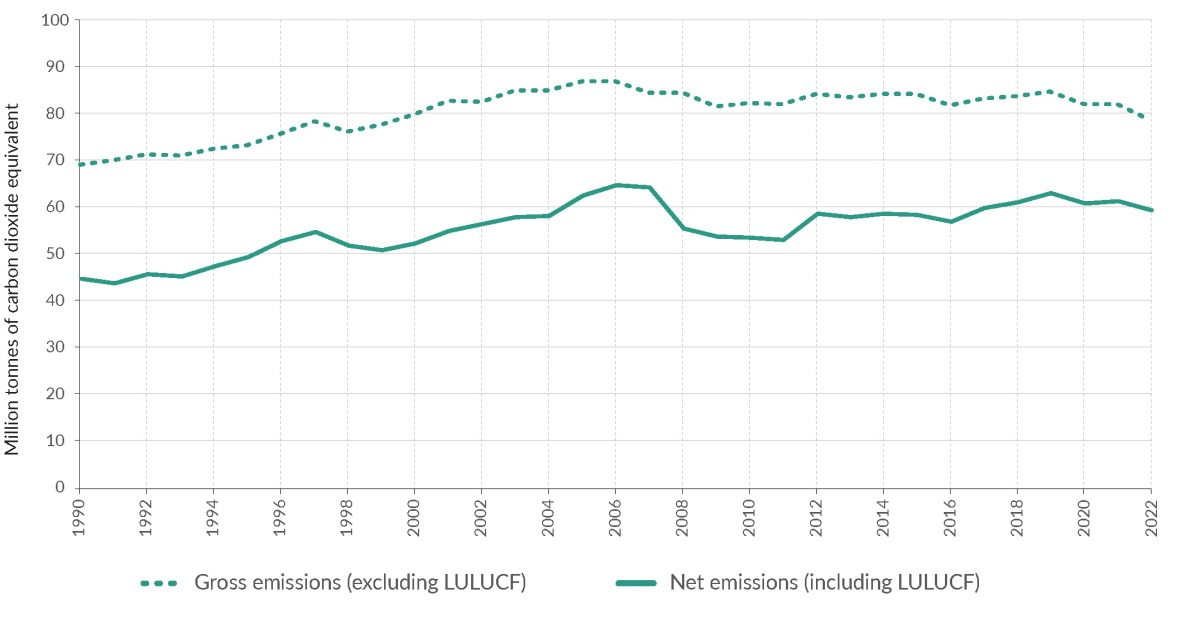
New Zealand’s Greenhouse Gas Inventory is compiled and submitted as part of Aotearoa New Zealand's responsibilities under the Paris Agreement and the United Nations Framework Convention on Climate Change.
Accurate measurements and reporting of our emissions also informs New Zealand’s climate change decisions.
Under the Paris Agreement, New Zealand has set a target to reduce net emissions to 50 per cent below gross 2005 levels by 2030. New Zealand has also set domestic emissions reduction targets.
The Inventory does not track progress towards targets. New Zealand will report information about its Paris Agreement target in the first Biennial Transparency Report, which will be published by 31 December 2024.
The Ministry for the Environment also produces annual estimated projections of emissions to 2050, which will be updated by December 2024.